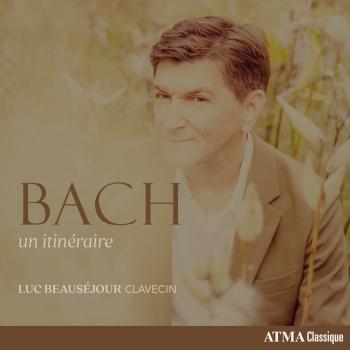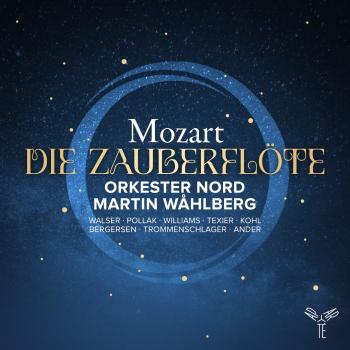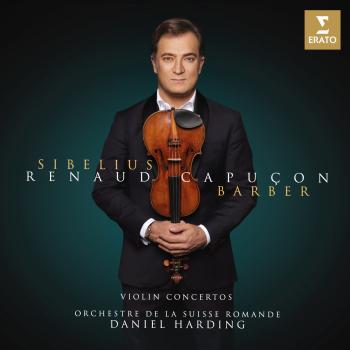
Vitae Pomeranorum, Vol. 2 Urszula Stawicka & Consortium Sedinum
Album Info
Album Veröffentlichung:
2016
HRA-Veröffentlichung:
30.12.2015
Label: RecArt
Genre: Classical
Subgenre: Chamber Music
Interpret: Urszula Stawicka & Consortium Sedinum
Komponist: Johann Vierdanck, Dietrich Buxtehude, Johann Valentin Meder, Johann Fischer, Theophil Andreas Volckmar
Das Album enthält Albumcover
- 1 Canzona No. 21 in C Major 04:59
- 2 Canzona No. 22 in G Minor 03:58
- 3 I. Allemande d'amour 03:00
- 4 II. Courante 01:30
- 5 III. Sarabande d'amour 01:39
- 6 IV. Sarabande 01:04
- 7 V. Gigue 01:18
- 8 Trio Chaconne 04:38
- 9 I. Allemande 01:30
- 10 II. Angloise 00:50
- 11 III. Gigue 01:01
- 12 IV. Menuet I-II 02:29
- 13 V. Ballet 00:59
- 14 I. Adagio 02:29
- 15 II. Allegro 02:06
- 16 III. Adagio 03:23
- 17 IV. Allegro 02:47
- 18 I. Allemande 02:55
- 19 II. Courante 01:31
- 20 III. Sarabande 02:11
- 21 IV. Gigue 01:46
- Vierdanck: Passamezzo
- 22 Passamezzo 08:15
- Galiarda
- 23 Galiarda 02:15
Info zu Vitae Pomeranorum, Vol. 2
The Duchy of Pomerania (Ducatus Pomeraniae), ruled by the domestic House of Griffins, covered the southern coast of the Baltic Sea and spread from Rugia Island in the west to the Lauenburg land in the east. In the 16th century Pomerania experienced a rapid development of culture and art, which can safely be called its “golden age”. The Court’s patronage was accompanied by the success of the Reformation and the adoption of Protestantism. At the beginning of the next century, during the rule of Phillipe II, the cultural development of the Duchy was impressive and nothing foreboded the early demise. Unfortunately, the House of Griffins was coming to its end and the Thirty Years’ War, which began in 1618, made this powerless land a fighting ground for the foreign armies, first that of the Empire and then those of Sweden and Brandenburg.
The war resulted in enormous devastation of the region, the population was reduced by over 40% and dozens of towns and villages were burnt down. Finally, by virtue of the Peace of Westphalia in 1648 Pomerania was divided between Sweden (the western part with the mouth of the Oder) and Brandenburg (the lands to the east of the Oder).
The grand funeral of the last Griffin, Bogislaw XIV, in 1654 (due to the war and empty treasury his earthly remains had to wait for 17 years before the burial ceremony took place) marked the definite end to the 500-year period of the Duchy of Pomerania.
Succession after the last Duke from the House of Griffins was taken over by the House of Hohenzollern and the Swedes, while Poland took over its fief, the Lauenburg and Bütow Land. Ernst Bogislaw von Croÿ, the Lutheran Administrator of the Prince-Bishopric of Kamień and the Griffin on the distaff side, managed to preserve some of the material heritage left by the ducal family. He funded the Baroque interior of St. Jack’s Castle Church in Słupsk and the Cathedral in Kamień, including the famous organs. He was also the patron of the Pomeranian University in Greifswald.
At the beginning of the 18th century the divided Pomerania was faced with further destruction with the Swedish-Brandenburg wars and the Great Northern War. The latter conflict resulted in the incorporation of the part of the Swedish Pomerania (with Szczecin) into Prussia. In the aftermath of these events the development of the region’s culture was suppressed, which is apparent in the late and relatively weak popularity of the Baroque style, particularly in architecture.
Consortium Sedinum:
Grzegorz Lalek, Baroque violin
Agnieszka Świątkowska, Baroque violin
Gertrud Ohse, Viola da gamba, Baroque cello
Henryk Kasperczak, Theorbo
Urszula Stawicka, Harpsichord, direction
Consortium Sedinum
was established in 2000 in Szczecin and refers to the music traditions of the historical region of Pomerania. The group continues the artistic work of the University Baroque Orchestra Consortium Iagellonicum, which functioned in 1993-2000 at the Jagiellonian University in Kraków. Consortium Sedinum is made up of different musicians who play historical instruments and specialize in Historically Informed Performance Practice, depending on the repertoire, which spans from the Renaissance to Classicism. Urszula Stawicka, who plays the harpsichord and organs, is the artistic director of the group. A special place in the group’s repertoire is taken by the works of composers connected with the House of Griffins and the Szczecin Cantata School. The group uses unconventional forms of presenting music during the series of concerts: Muzyka na dworach Europy (Music at the European Courts) and Regaty Barokowe (the Baroque Regatta), combining the early music with historical dance. Vivid thematic shows connected to the most important centres of the European courtly art have become popular in Poland and abroad. The group cooperates with renowned soloists and groups and has played a number of concerts and festivals, including: UsedomerMusifestival, UckermarkischeMusikwochen, Hohenlocher Kultursommer Festival, the Early Music Festival in Stary Sącz, the Bach Festival in Gliwice, the Circles of Art in Cieszyn, the CracoviaDanza Festival, the Bach Days in Kraków, Forum Musicum in Wrocław and the International Early Music Festival in Lwów. Consortium Sedinum has also initiated and organized for the first time the Szczecin Early Music Festival. Since 2006 the group has participated in a project whose aim is to publish and record music documents from the Archives of the Monastery of Pauline Fathers at Jasna Góra. The album from the series Vitae Pomeranorum – The Lost World of Pomeranian Music features the premiere recordings of the chamber music of J. Vierdanek, V. Meder, T.A. Volckmar and J. Fischer – the Pomeranian composers of the 17th century and marks the 15 years of Consortium Sedinum. It was recorded with the support of the Ministry of Culture and National Heritage and the City of Szczecin.
Dieses Album enthält kein Booklet












